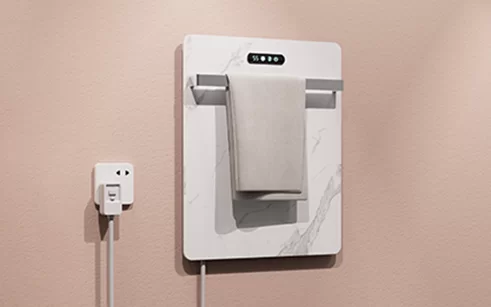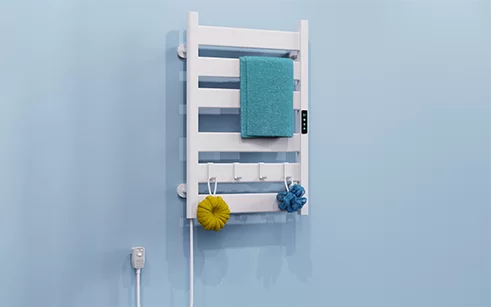
A towel warmer is a bathroom appliance designed to heat and dry towels, enhancing comfort and preventing moisture-related issues such as mold and mildew. It also helps maintain a warm and cozy environment in your bathroom, making it an essential addition for many homeowners.
Heated towel rails come in two primary types: hydronic towel warmers and electric towel warmers. Each has its own advantages and best-use scenarios, which we will explore in detail.

A hydronic towel warmer operates by circulating hot water from the home's central heating system or a dedicated boiler. These units are typically integrated into the existing plumbing and provide consistent, even heat.

An electric towel warmer functions independently of a central heating system and uses an internal heating element to warm up. These models can be hardwired or plugged into an electrical outlet, making them a flexible choice for many bathrooms.
Choosing between a hydronic vs electric towel warmer depends on several factors. Here are 8 key differences to help you decide which one suits your needs best.
| Factor | Hydronic Towel Warmer | Electric Towel Warmer |
| Installation Complexity | Requires connection to the home's hot water heating system, more complex, needs professional plumbing services. | Easier installation, plug-in models need no setup, hardwired versions require a simple electrical connection. |
| Market Popularity | Less common, favored in homes with existing radiator systems. | More popular, easy installation, versatile. |
| Heating Mechanism | Dependent on the home’s central heating, uses hot water. | Uses built-in electric heating elements, independent operation. |
| Heating Speed | Slower, takes longer as it depends on the central heating system. | Faster, heats up within 10–20 minutes. |
| Maintenance & Durability | Requires occasional maintenance, like checking for leaks or flushing the system. | Minimal maintenance, mainly cleaning and electrical checks. |
| Operation Independence | Tied to the home’s heating system, limited use in warmer months. | Operates independently, can be used year-round. |
| Energy Efficiency & Cost | More energy-efficient if the heating system is running but requires ongoing energy use. | Eco-friendly options with low-energy consumption and timers. |
| Cost | Higher initial installation cost, but lower long-term operational costs in some cases. | Generally more affordable upfront and cost-effective for most households. |
The best type of heated towel rail depends on your home setup and preferences. If you have an existing radiator system and want a seamless, efficient heating solution, a hydronic towel warmer radiator may be ideal. However, for flexibility, independent operation, and easy installation, an electric towel warmer is often the better choice.
Looking for the best electric towel warmer? FAAO offers a range of bathroom towel warmer electric models that combine efficiency, style, and advanced technology.
When comparing hydronic vs electric towel warmer, it’s essential to consider installation, efficiency, cost, and functionality. Both options have their benefits, but for most homeowners, an eco-friendly electric towel warmer technology model provides the best balance of convenience and efficiency. No matter which option you choose, investing in a heated towel rail will elevate your bathroom experience.